The A-4 Skyhawk Light Attack Plane
November 18th, 2023
7 minute read
World War II taught the U.S. Navy the value of carrier-based attack planes. Japanese aircraft crippled the American fleet at Pearl Harbor and later won pivotal engagements for the U.S., including the Battle of Midway. After the war, America began developing new, jet-powered attack aircraft including the Douglas A-4 Skyhawk. Extensively tested in the fire of combat, the Navy and Marine A-4 attack squadrons were a frequent sight in the Vietnam War. It also served with distinction in the defense of Israel. In this article, Dr. Will Dabbs gives us insight into this iconic aircraft.
It was 12 May 1970, and the morning dawned hot and clear over South Lebanon. The perennial war between the Israelis and terrorists of sundry flavors was ever ongoing. The Israeli focus this day was called Operation Cauldron 2.
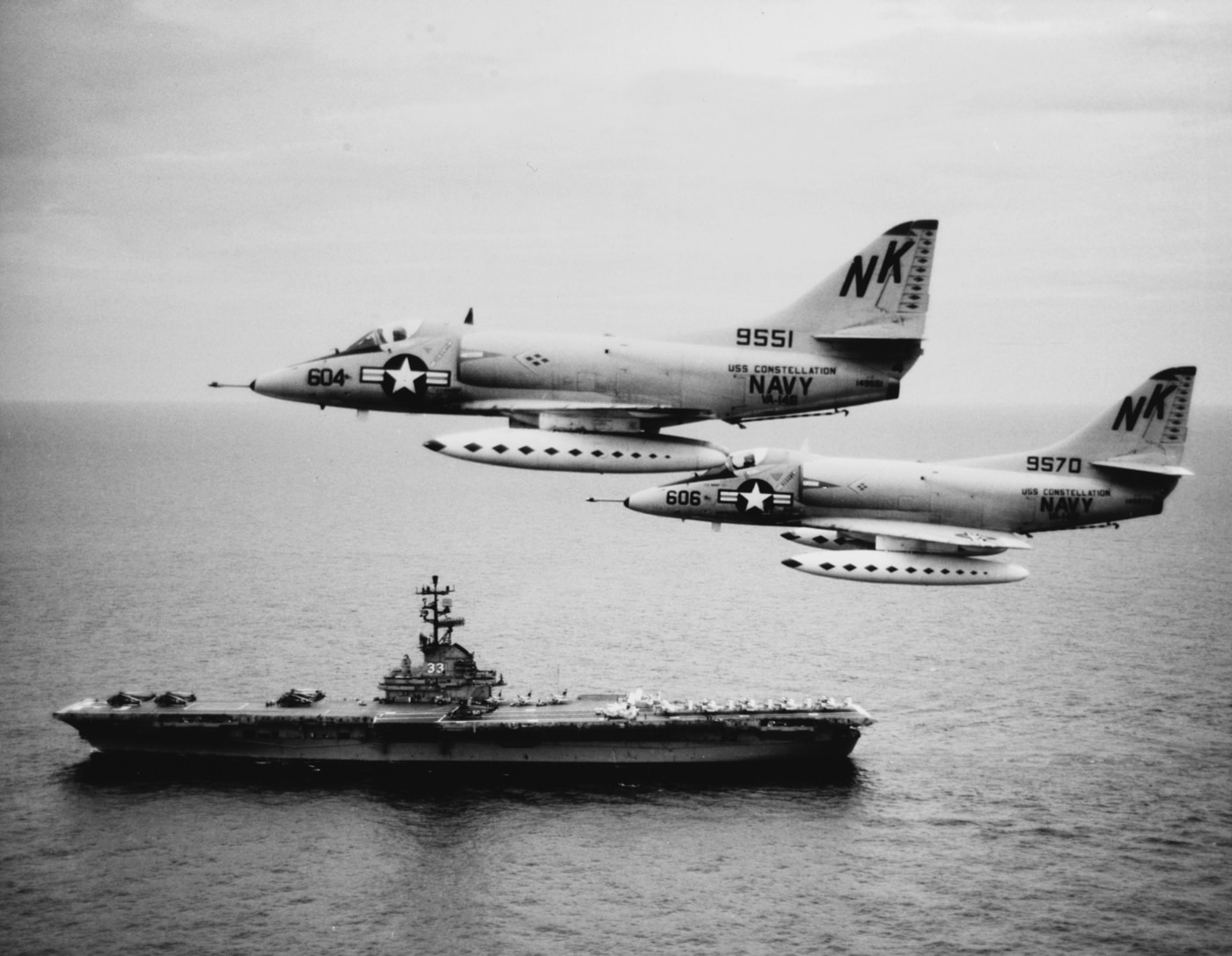
Lebanon was once a simply magnificent place. The refined and well-heeled came from around the world to sample its delights. However, by 1970, Lebanon was caught between an unstoppable force and an immovable object.
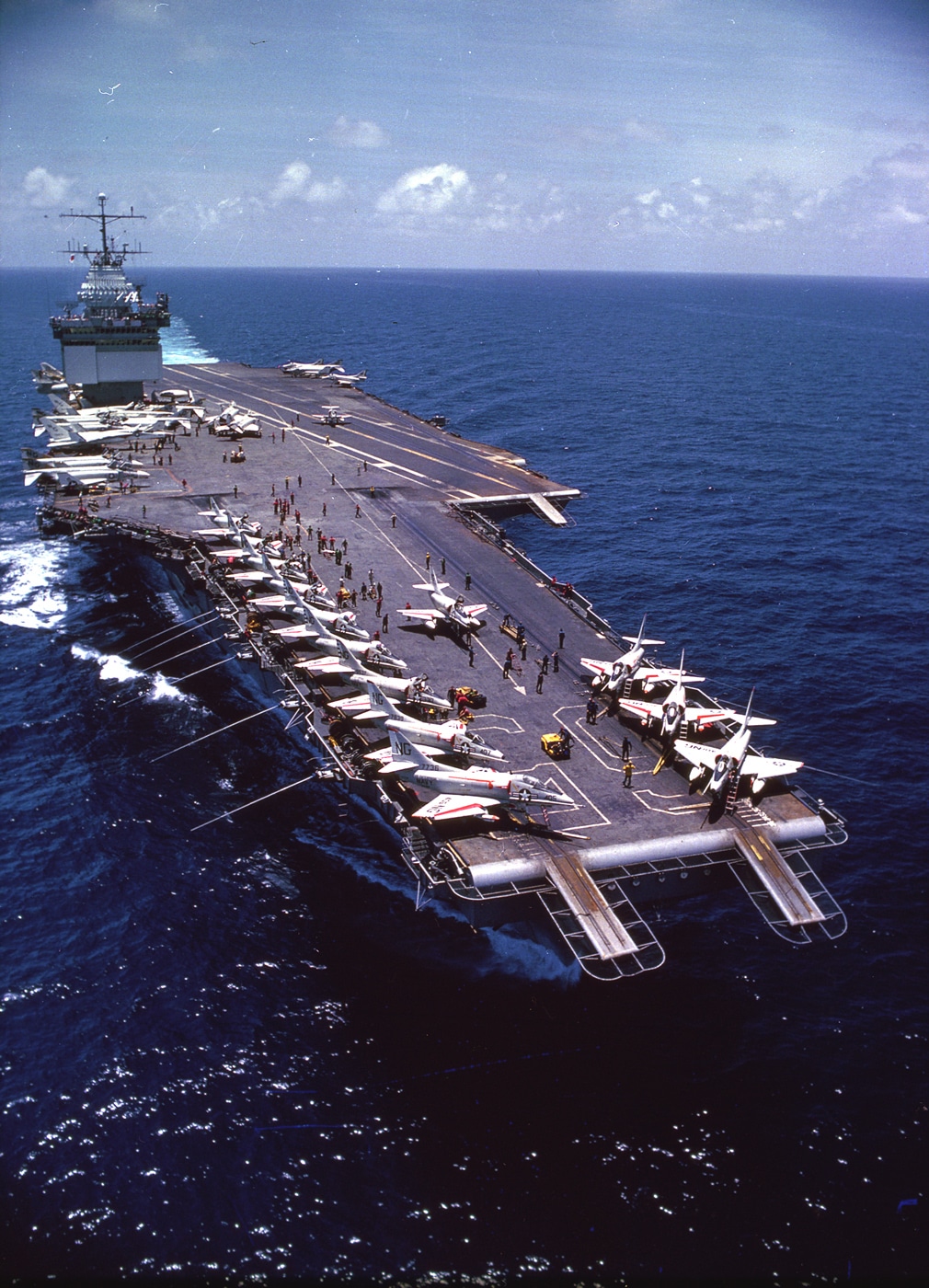
With the Palestinian Liberation Organization (PLO) staging operations out of south Lebanon against Israeli civilian targets, Prime Minister Golda Meir had had enough. She unlimbered the Israeli military to take care of business. Its unfortunate geography turned south Lebanon into a war zone. The once-thriving nation never really recovered.
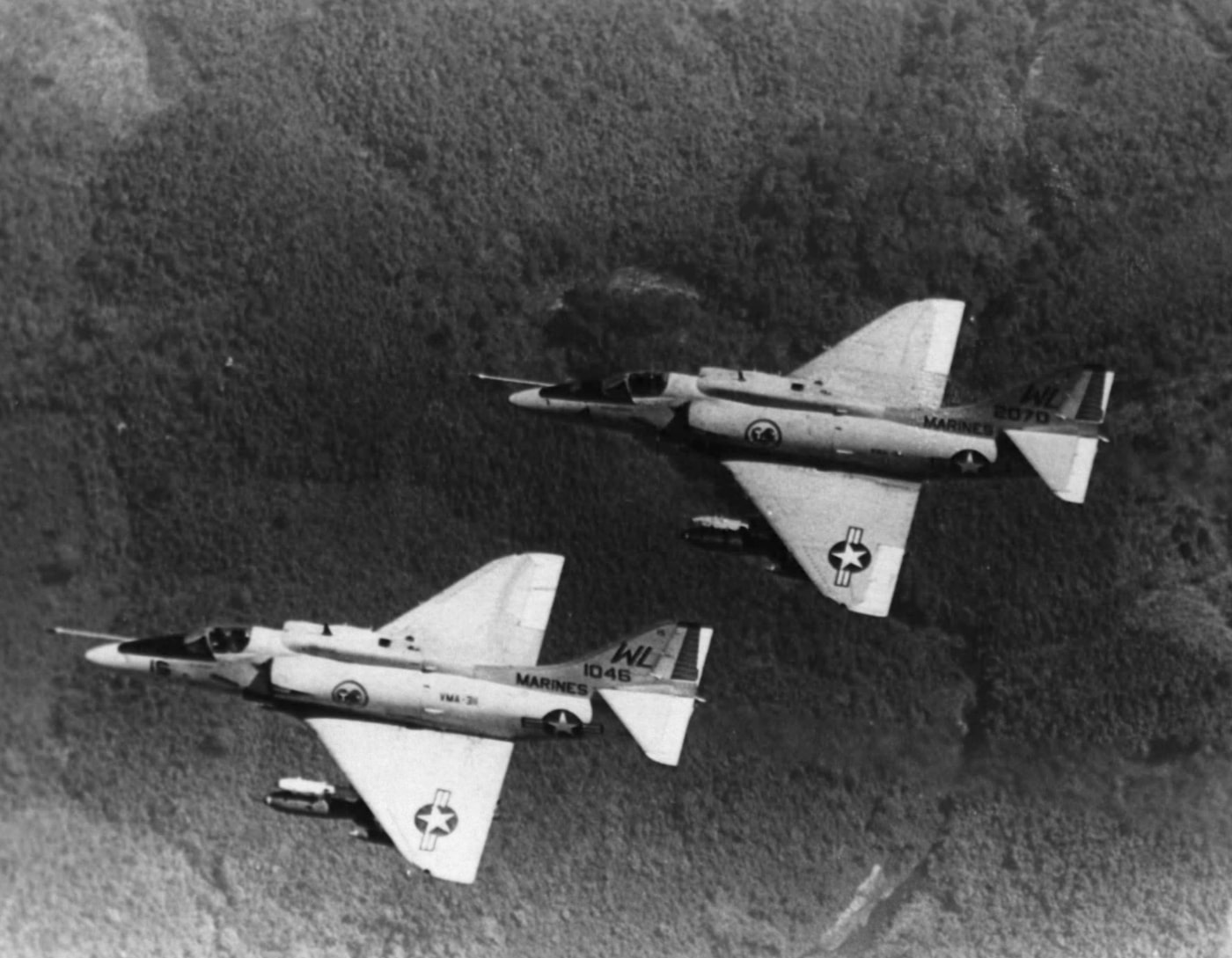
Israeli Air Force pilots Ezra “Baban” Dotan and Giora Ben-Dov were flying Douglas A-4 Skyhawks in support of Israeli infantry and armor forces engaged against PLO irregulars. This was one of the most disputed spaces on earth, and the skies were alive with combat aircraft from both Israel and Syria.
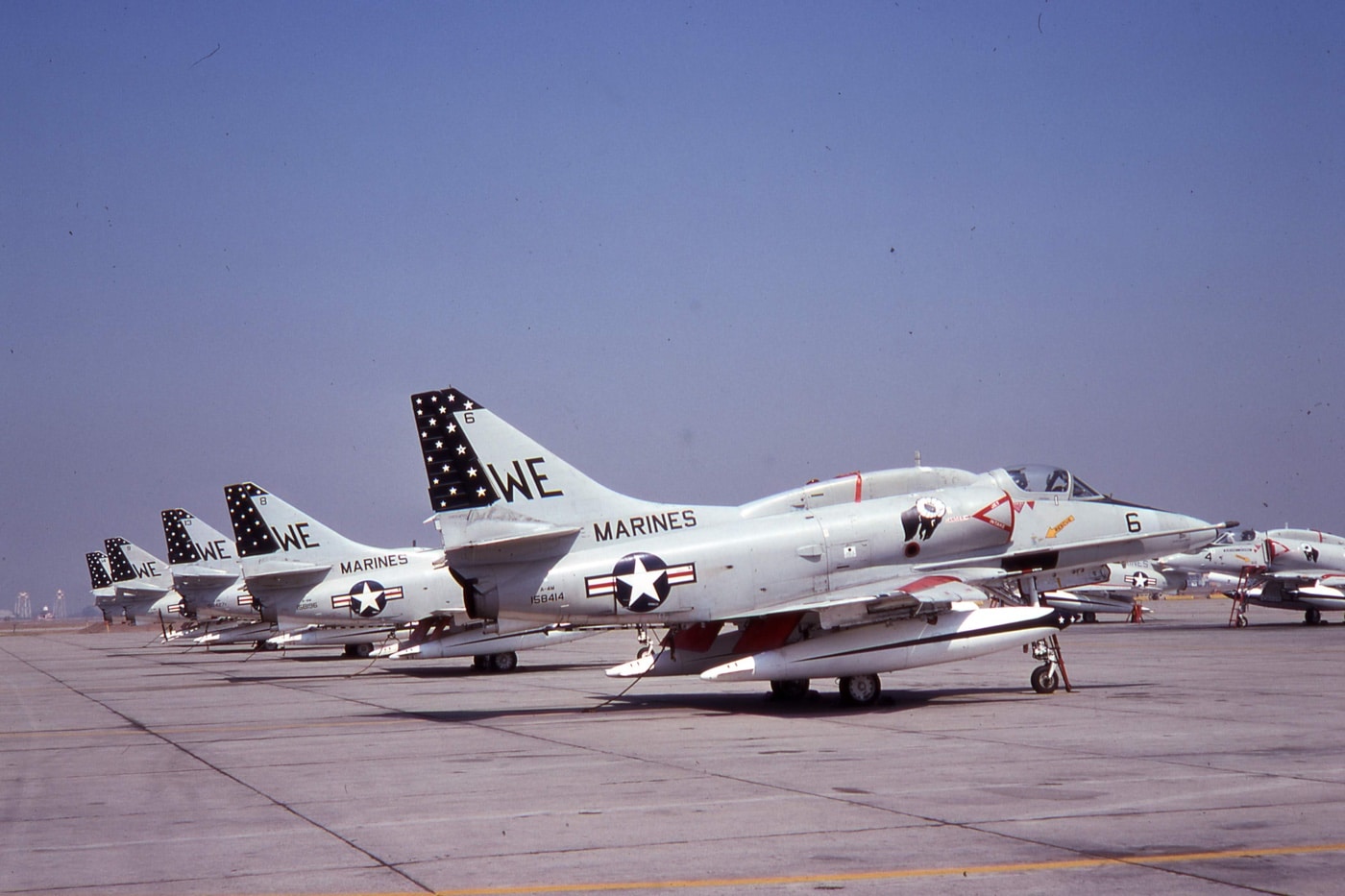
On this fateful day, Baban Dotan would be in the fight of his life. He was flying tail number 5303, one of 264 Skyhawks operated by the IAF.
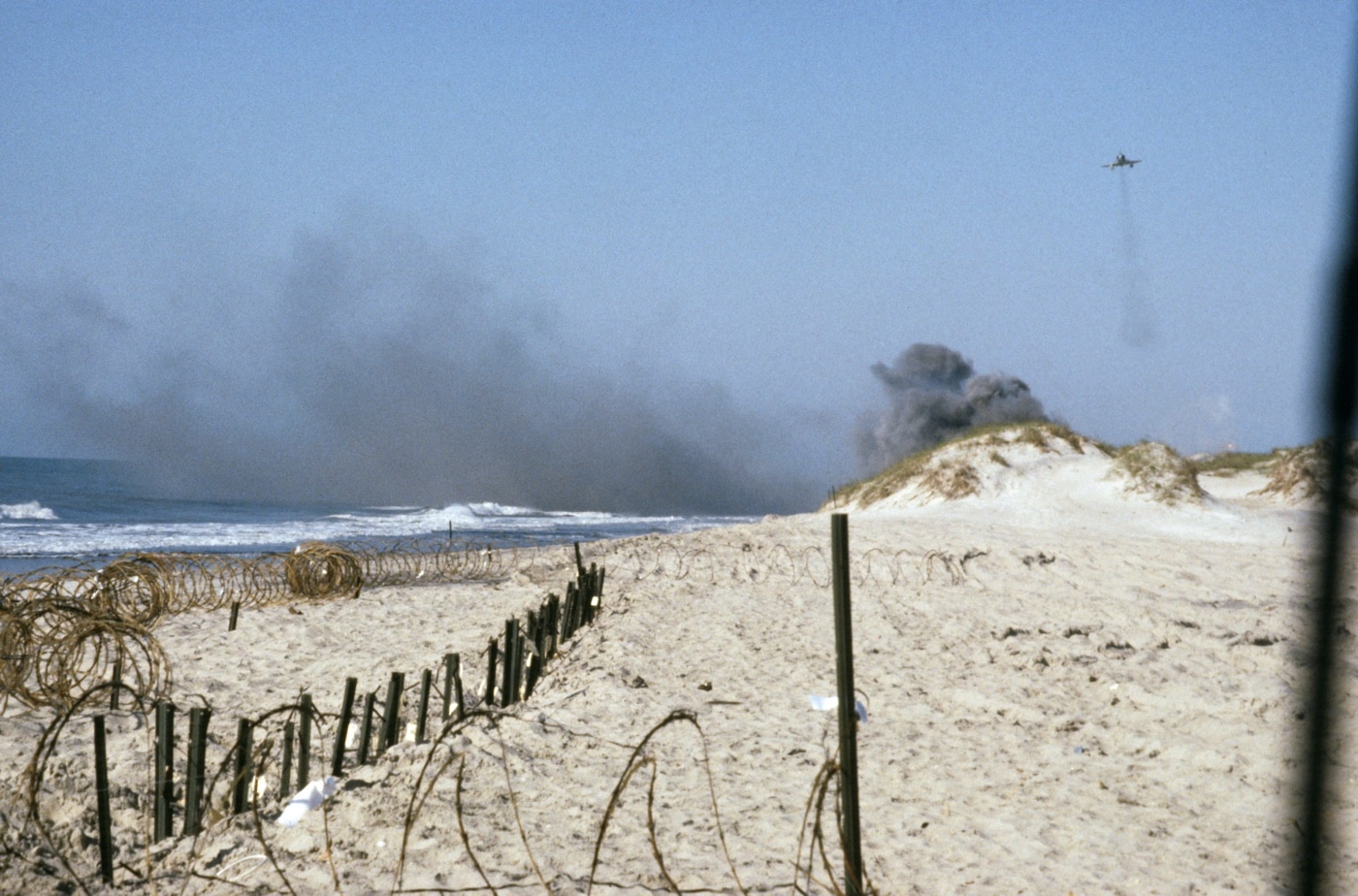
The A-4 is a subsonic ground attack airplane. There really was no provision for this model Skyhawk to fight other aircraft. The loadout consisted of five pods of unguided rockets and a pair of locally-produced 30mm cannon per aircraft. The Skyhawk’s gunsight had no settings for air-to-air engagements. It was in this configuration that Dotan and Ben-Dov spotted four Syrian MiG-17 fighters flying at low level and looking for trouble.
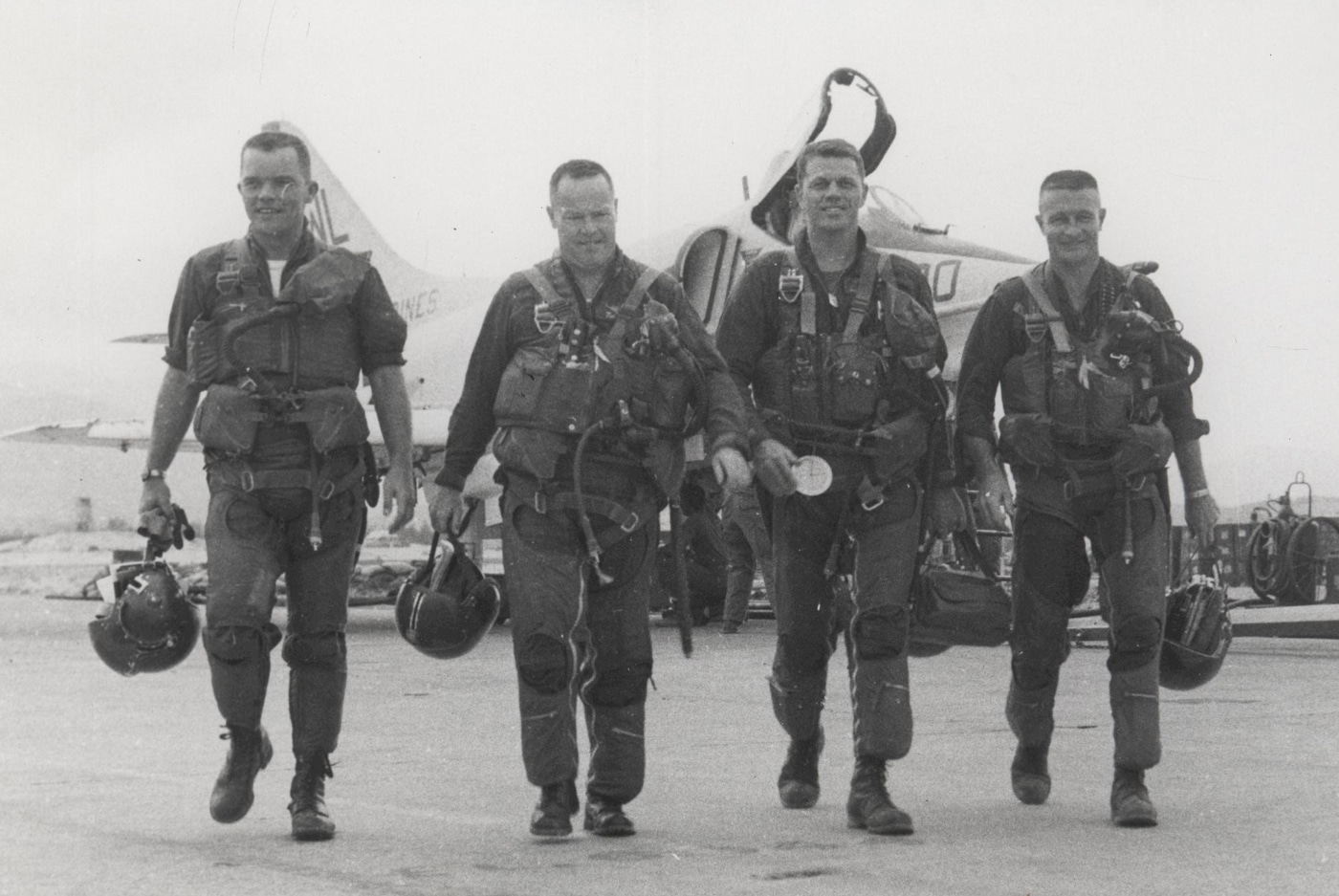
Dotan had previously flown French-built Dassault Mirage fighters, and he already had three air-to-air kills to his credit. Once he identified these four Syrian fighters Dotan dove into the attack despite not having a whole lot with which to fight. Ben-Dov opened the engagement with his cannon but missed. Dotan followed up by rippling off 38 unguided rockets from two of his five pods. These heavy air-to-ground weapons fell far short of his squirming agile target. Dotan pitched the nose up slightly and salvoed another 38 rockets. This swarm connected, pulverizing the hapless Syrian fighter plane.
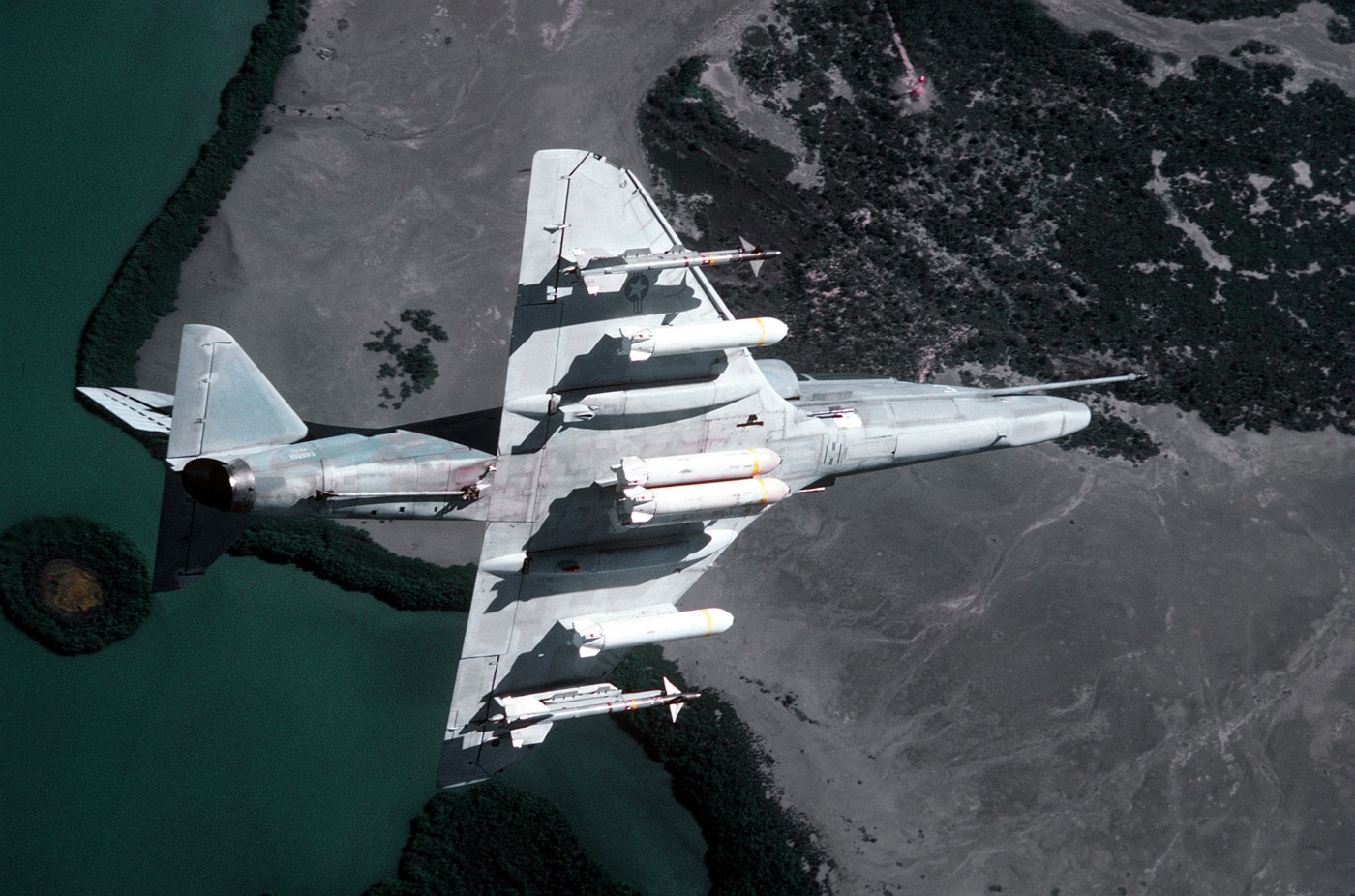
By now one of the other Syrian aircraft was turning into him. Dogfighting one of the most nimble fighter aircraft on the planet, Dotan laid his own little attack plane over and got it on. Dotan found himself in a steep dive and rapidly running out of both space and ideas. Realizing he was about to strike the ground, Dotan emergently jettisoned his five rocket pods and torqued the little plane up in the nick of time. After a series of disorienting twists and turns, Dotan found himself fortuitously on the tail of the other MiG and opened fire. However, his plane wasn’t designed for this, and he missed.
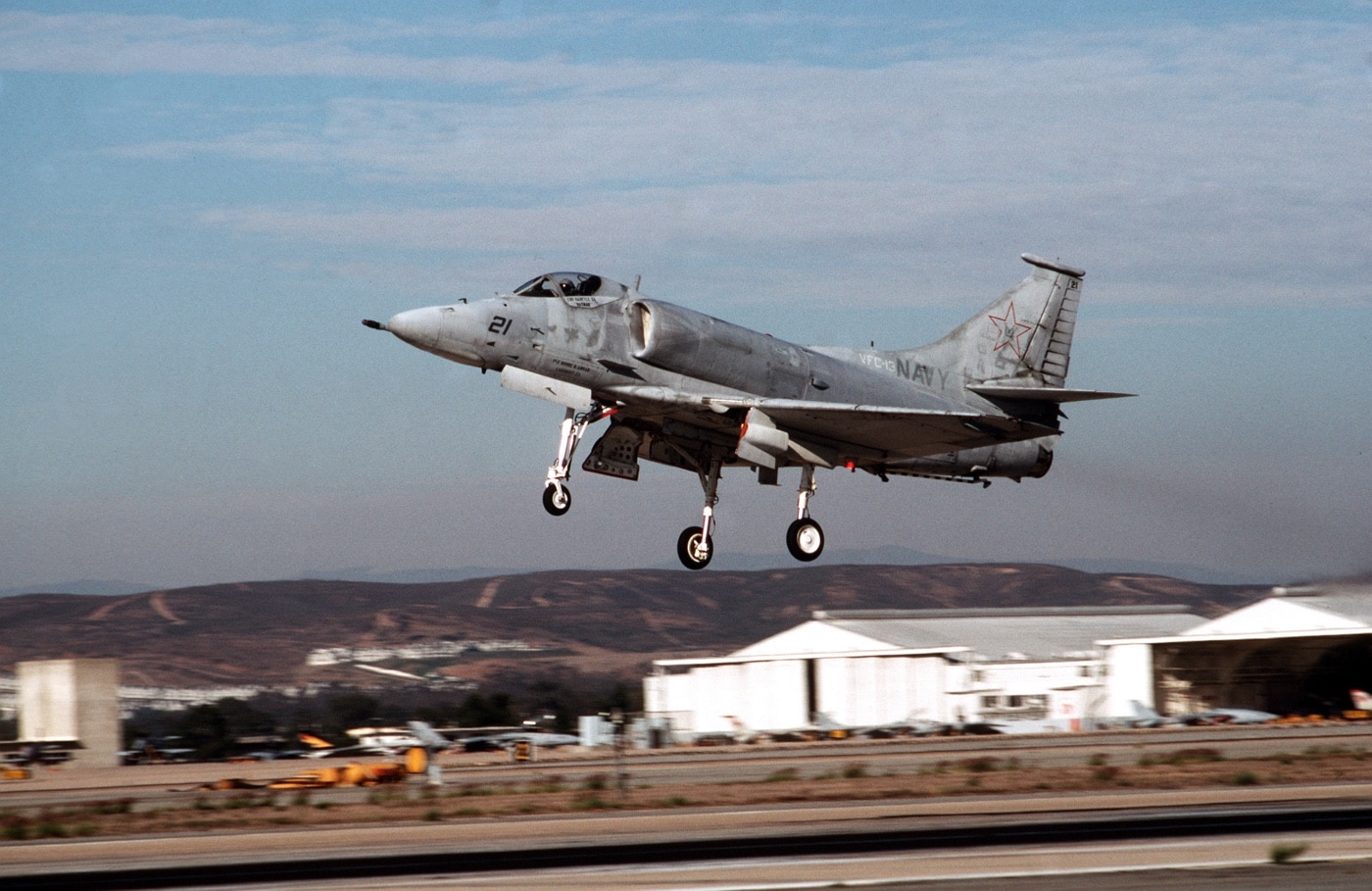
The MiG-17 dropped down into a handy canyon and tore along like a bat outta hell. Dotan temporarily lost sight of the airplane only to have it zoom climb upwards when it ran out of airspace. Dotan chopped his throttle and deployed his flaps and dive brakes to bleed airspeed. When the moment was perfect, Dotan tweaked the lay of his guns and fired a vicious burst of 30mm high explosive rounds into the corkscrewing MiG. His rounds exploded along the wing root, folding the wing and causing the enemy fighter to roll to the right and explode on the arid ground below.
A-4E Skyhawk Specifications
- Length: 40′
- Wingspan: 27.5′
- Max Takeoff Weight: 24,500 lbs
- Powerplant: Pratt and Whitney J52-P-6A Turbojet
- Maximum Speed: 585 knots (673 mph)
- Ferry Range: 2,194 miles
- Armament: 2x20mm Colt Mk 12 Autocannon
The Plane
I have a friend who flew Skyhawks operationally for the U.S. Marine Corps. He adored the agile little fighter. First flown in June of 1954, the single-engine Skyhawk was originally designed as a replacement for the piston-engine A-1 Skyraider attack aircraft. Like the Skyraider, the Skyhawk was ultimately used for all sorts of things its designers never might have imagined.
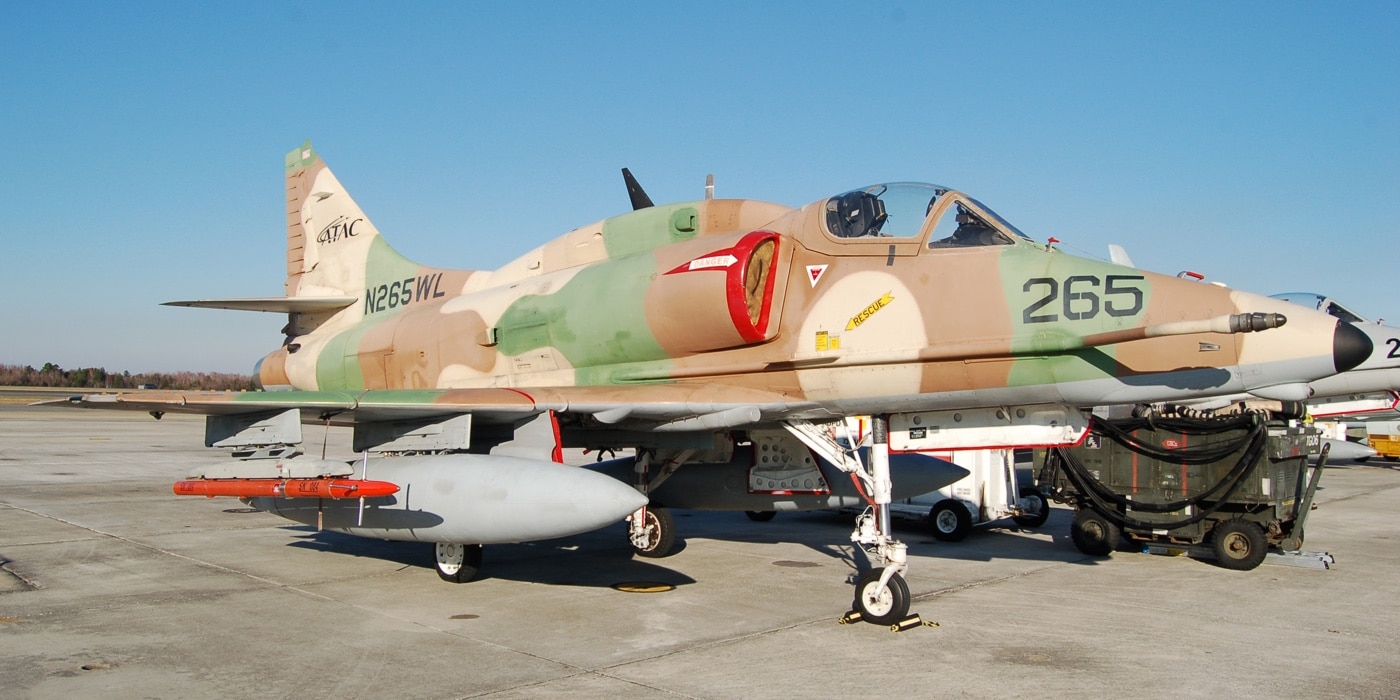
With a maximum weight of 24,500 lbs. and a top speed of 670 miles per hour, the A-4 was quite small by the standards of the day. The plane was powered by a single Pratt and Whitney J52 engine and was designed to be simple and easy to maintain. Where many comparable fighters had to be essentially torn apart for routine maintenance, the Skyhawk was a mechanic’s dream. To swap the engine, the entire tail assembly was readily removable.
In addition to compact dimensions that lent themselves to easy storage of the plane onboard aircraft carriers without the need for folding wings, the Skyhawk was also just dirt cheap. Its sticker price was $860,000 apiece. The little Skyhawk cost a fraction of what an F-4 Phantom air superiority fighter might.
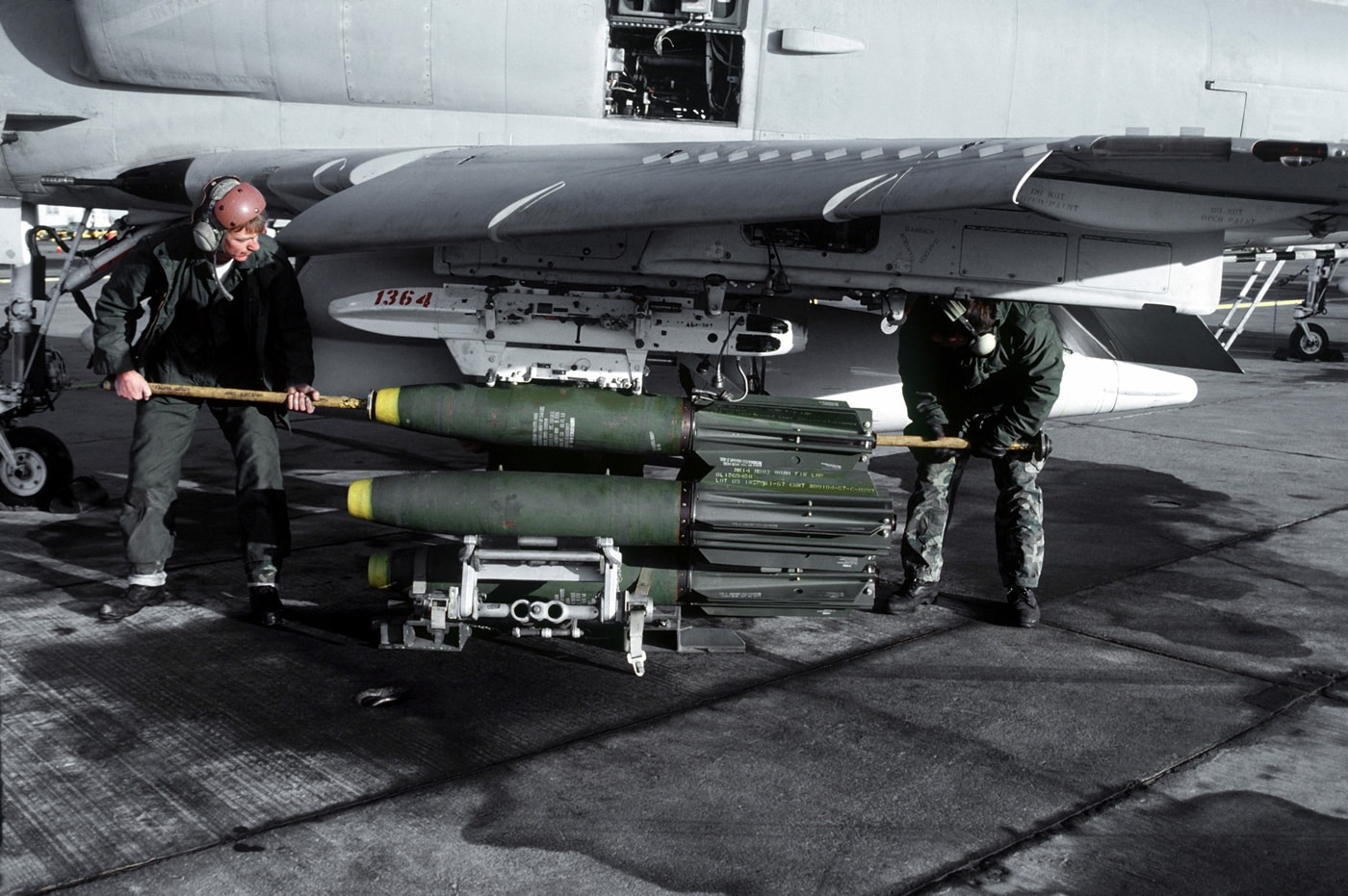
Leading edge slats deployed automatically due to gravity in tight turns in much the same fashion as did those of the Messerschmitt Bf-109 during World War II. The superb design of the plane made it amazingly light on the controls. The plane was tough to trim up for consistent straight and level flight because it just wanted to tear about so badly. Such nimble flight characteristics earned this dedicated ground attack plane a lead role with both the Blue Angels as well as OPFOR (Opposing Forces) combat aircraft at Top Gun.
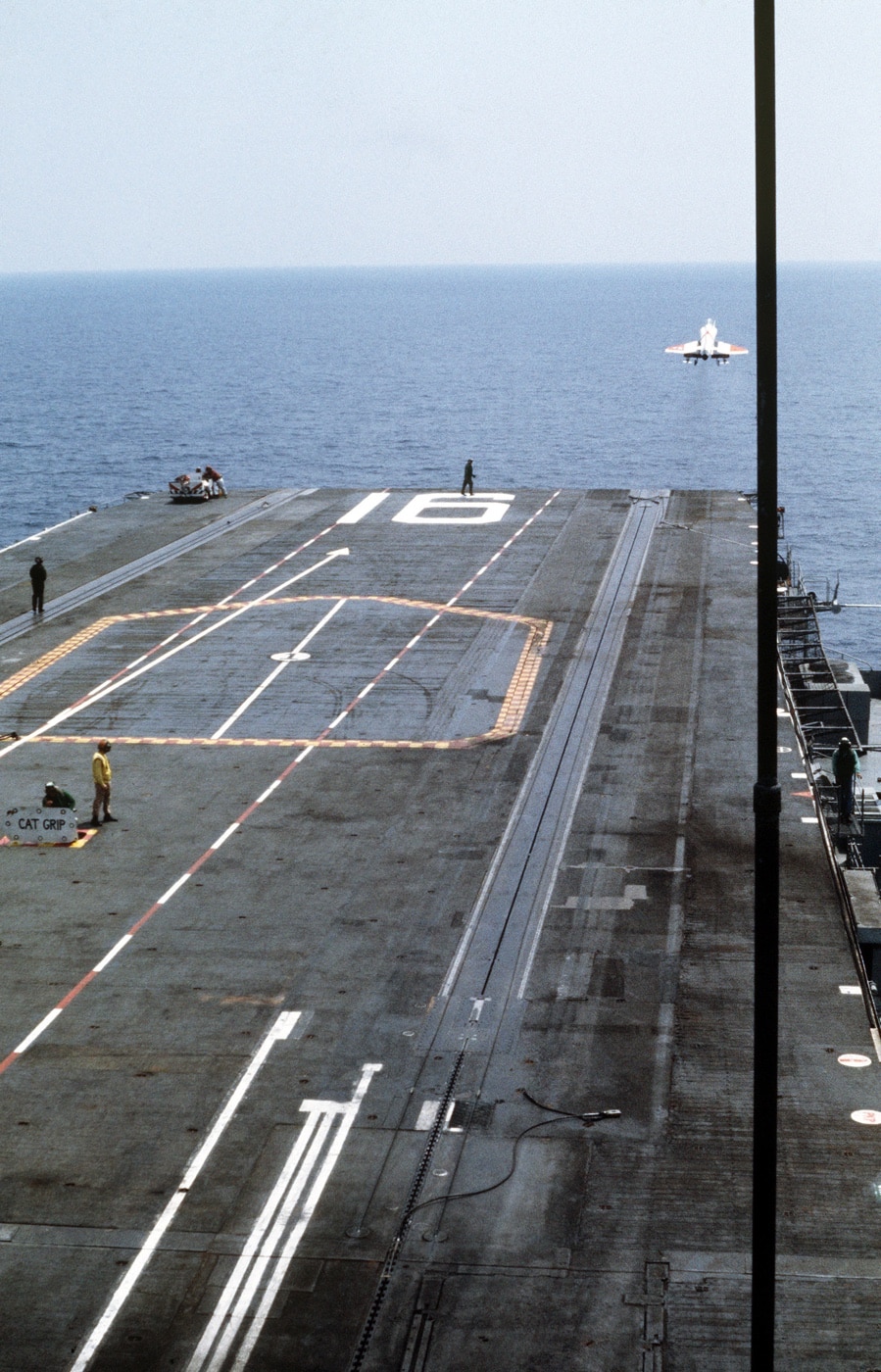
The A-4 really was a pilot’s airplane. With an amazing theoretical roll rate of 720 degrees per second, The A-4’s maneuvering capacity was unparalleled. The Navy’s NATOPS manual restricted the roll to 360 degrees per second to avoid potential structural damage. Additionally, the two large underwing external tanks were designed to act as ad hoc landing gear in the event of main gear failure. If the landing gear was shot up or the hydraulics failed the little plane could land on its drop tanks and be put back in service in less than an hour.
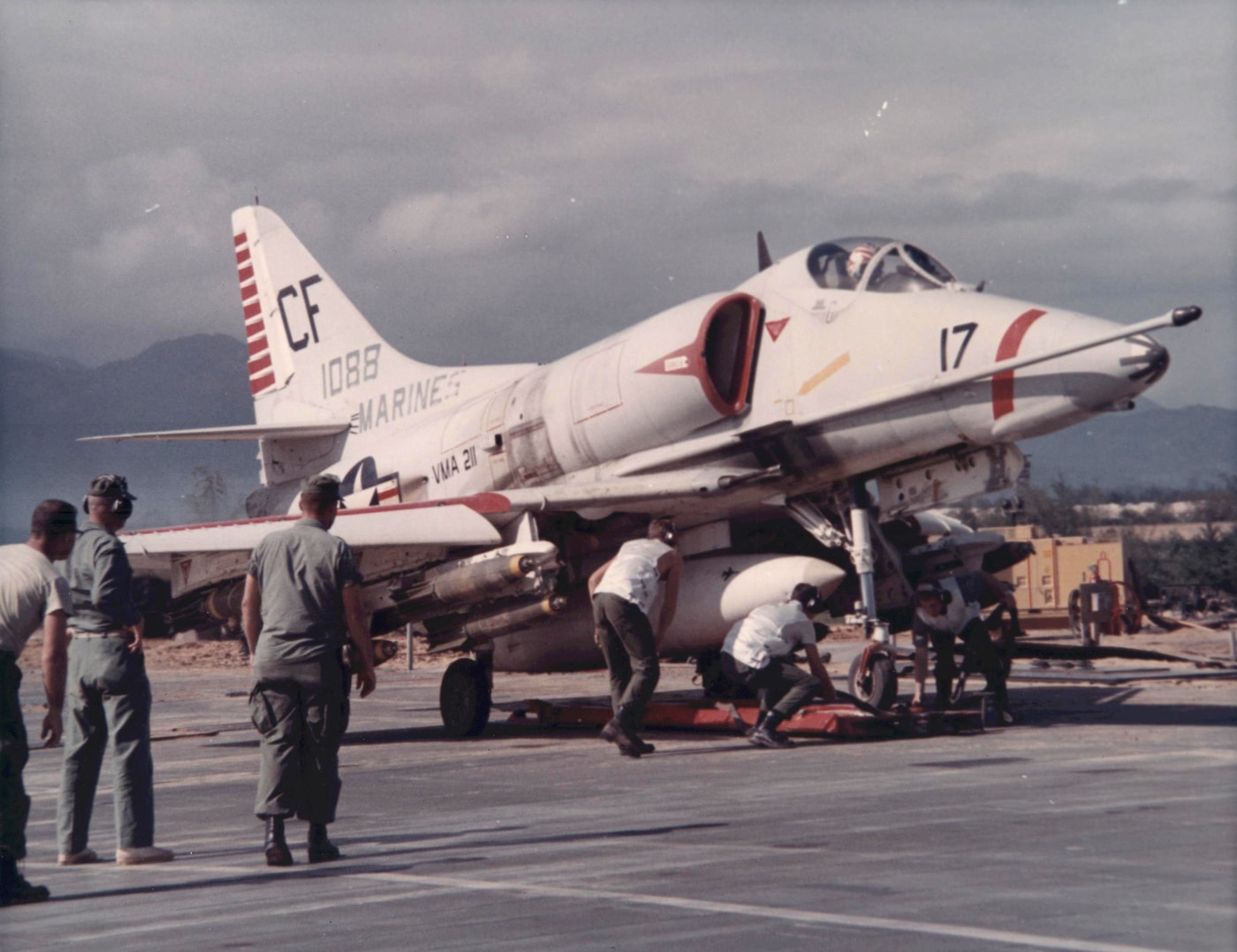
The A-4 Skyhawk even had a strategic nuclear mission. The attack profile involved a low-level ingress followed by a loft delivery wherein the aircraft was pitched up at the moment of weapons release to toss the nuclear bomb at the target. As atomic bombs are by definition area weapons systems, the innate lack of accuracy wasn’t a significant consideration.
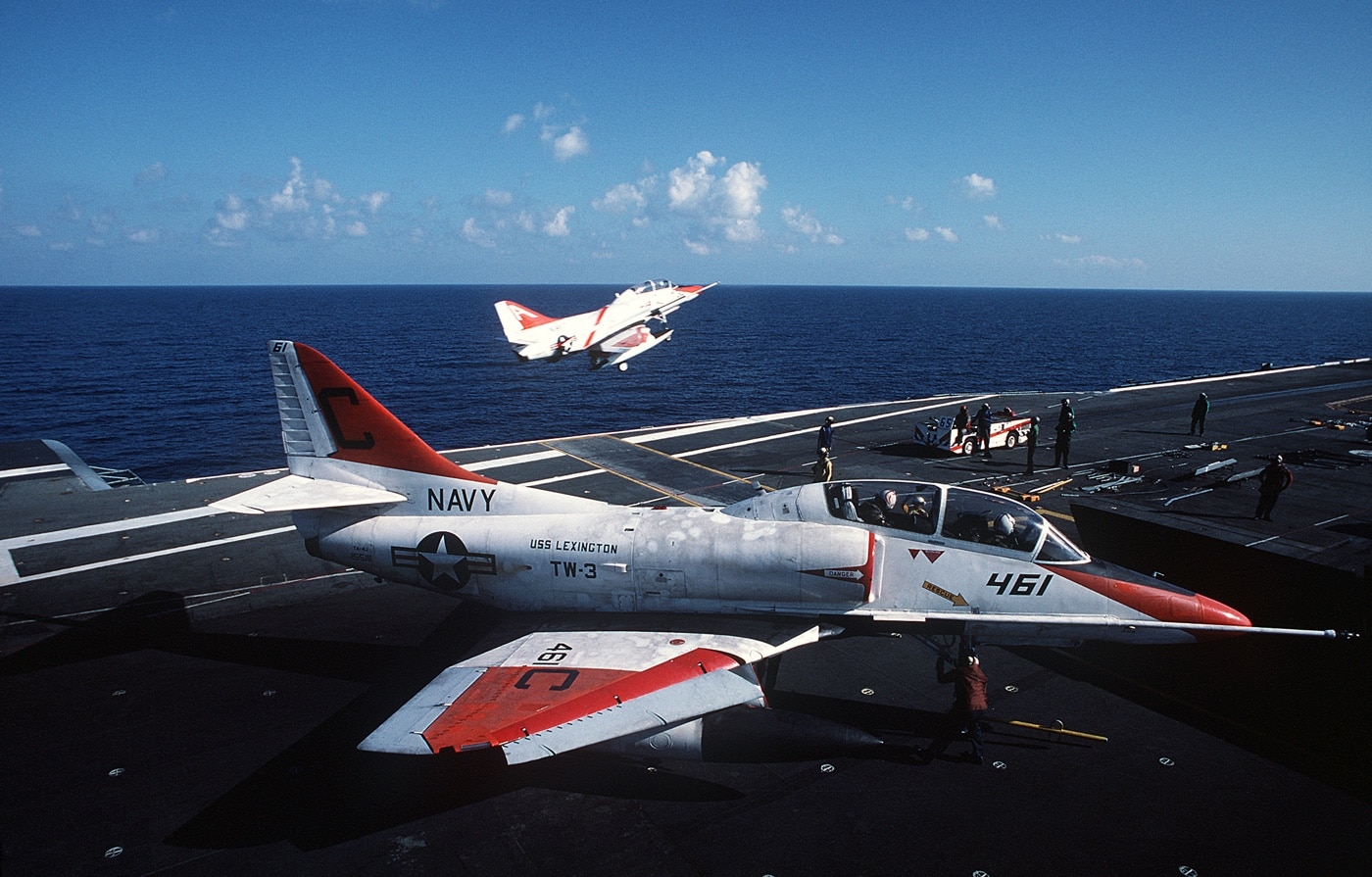
Douglas produced 2,960 copies, of which 555 were two-seat trainers. Skyhawks saw extensive action with the Israeli Air Force. They were also used operationally by the Argentines during the Falklands War as well as by Kuwaiti pilots resisting the Iraqi invasion during the First Gulf War. The Marines retired the A-4 in 1998, and the Navy gave theirs up five years later. The Israelis flew the plane operationally through 2015.
Editor’s Note: Please be sure to check out The Armory Life Forum, where you can comment about our daily articles, as well as just talk guns and gear. Click the “Go To Forum Thread” link below to jump in and discuss this article and much more!
Join the Discussion
Continue Reading
Did you enjoy this article?

 101
101






